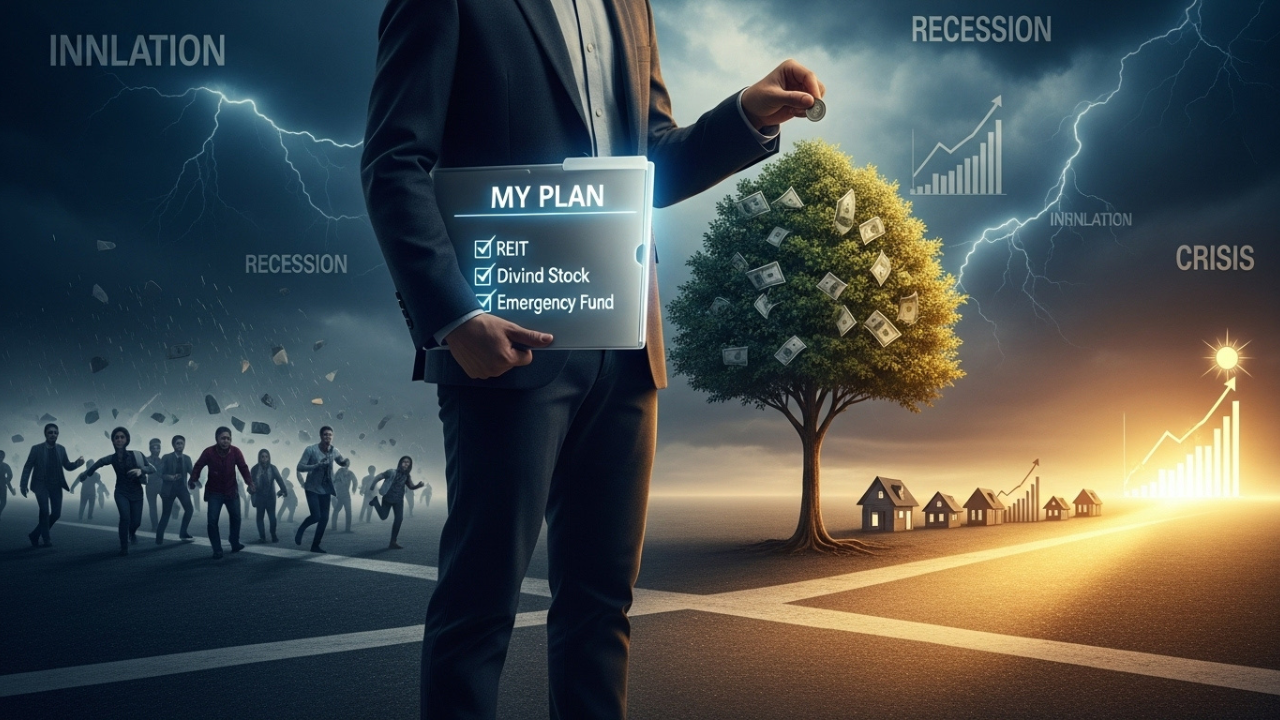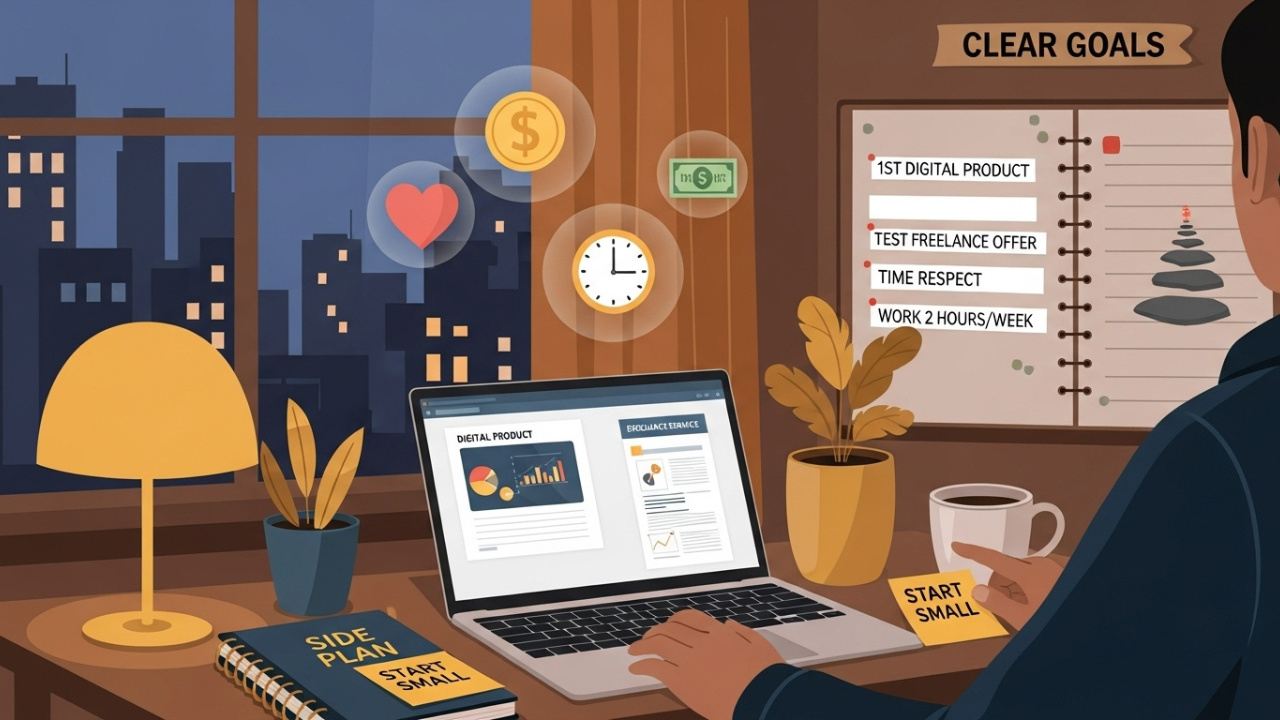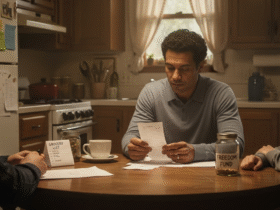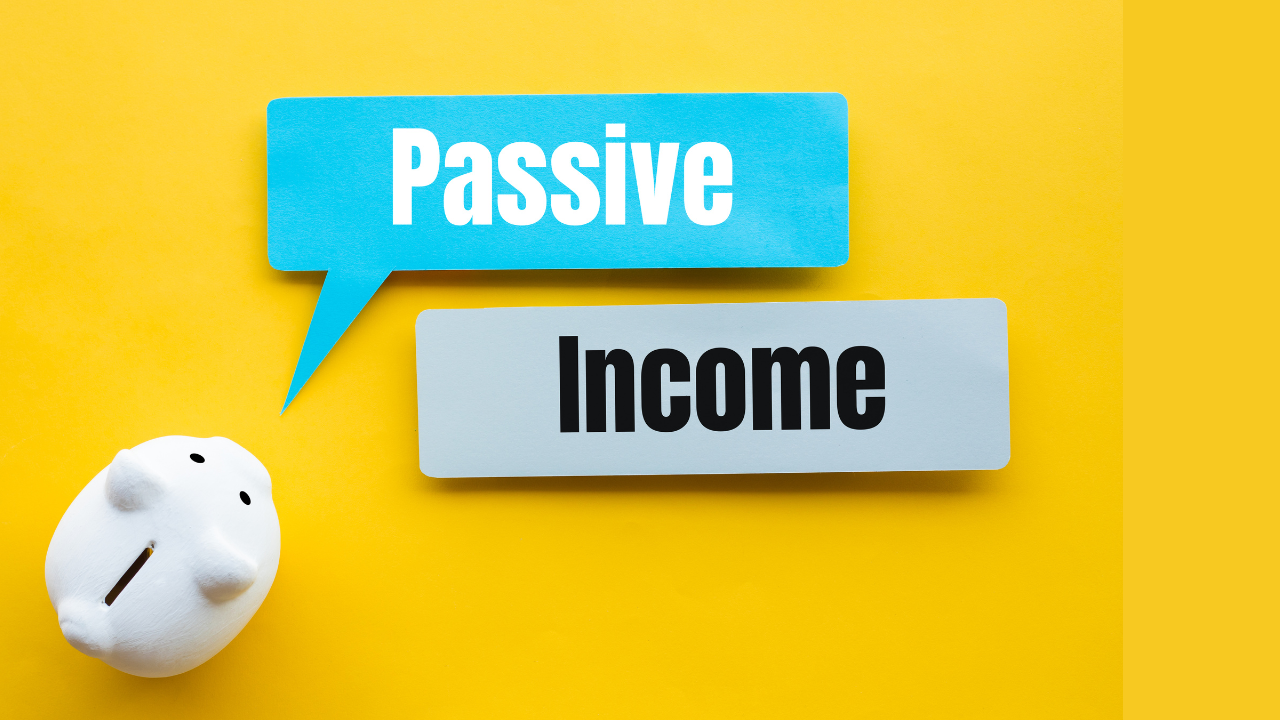You’re not imagining it. Things cost more now. Gas, groceries, rent, even your morning coffee. You might not track the numbers on paper, but you feel it every time you pull out your wallet. That quiet frustration of realizing your money doesn’t go as far as it used to—that’s inflation. And while it’s invisible, it eats through your income like rust eats metal. But this isn’t just another crisis story. This is about what you can actually do. Right now. Even if you’re not rich. Even if you’re just starting out. Even if money already feels tight.
Because when prices rise and uncertainty grows, most people panic. But the people who build wealth—real wealth—don’t just react. They plan. And that’s what we’re going to do together today. We will discuss how to think, where to concentrate, how to make small steps that will preserve and increase your money as the inflation continues doing its job.
Key Takeaways
Inflation quietly lowers the power of your money if you do nothing.
Smart investors stay steady and invest in assets that grow with value.
Real estate, dividend stocks, and essentials-based companies offer inflation resistance.
Fear leads to bad moves, but planning leads to long-term strength.
You don’t have to do everything — just one wise step at a time.
Understanding What Inflation Really Does
Inflation doesn’t take your money away. It takes its power away. If you had a hundred dollars last year, it might’ve covered a full cart of groceries. Now that same cart might cost you a hundred and twenty. And it’s not about luxury—this affects the basics. Eggs. Bread. Heat. Gas.
Most people don’t notice inflation right away. It creeps in. However, in just a couple of months, it begins to seem as though your wage did not change at all but your check has become smaller. That is the problem. Because if your money stays still while prices climb, you’re moving backwards. And doing nothing becomes risky.
Now, here’s the twist most people don’t realize. Holding on to your money feels safe. Putting it under the mattress or keeping it in a checking account might feel like you’re playing it smart. But during inflation, that’s not safety. That’s slow loss. So we need to find ways to make your money grow faster than inflation eats it.
The Fear Response That Holds People Back
It’s natural to worry. When prices rise and headlines scream recession, war, crisis, crash—it makes sense to feel like you should pull back. Play it safe. Wait it out. Maybe even stop investing altogether.
But this is what I want you to take it in plainly. The feeling that plugin is a form of security, turns out to be the place of entrapment. Because time doesn’t pause. Inflation doesn’t pause. And your future doesn’t pause either. Every day you wait is a day your money loses ground.
I’ve talked to people who pulled their money out of retirement accounts during a rough year. They wanted to wait until it “felt right” to invest again. But by the time they felt ready, prices had recovered—and they missed the growth. What they thought was caution became cost. So let’s not make that same mistake.
Learning to Think Like a Calm, Long-Term Investor
The smartest investors I know don’t try to time everything perfectly. They know that inflation is part of the cycle. Sometimes it rises fast. Sometimes it slows down. But it always exists in some form. And it’s something we manage—not something we outrun.
So your job isn’t to predict the future. Your job is to build something that survives it. That means learning to stay steady. Stay clear. Stay calm when everyone else is shaking. And yes, that’s easier said than done. But it’s also a choice. And that choice gets easier the more you practice it.
The goal isn’t to beat inflation every second. The goal is to build a system that grows over time—even with inflation swirling around it. And that’s where the right investments make a huge difference.
Where Smart Money Moves During Inflation
When inflation hits, some investments tend to hold their ground better than others. And the ones that grow usually have one thing in common—they produce real value. That means they earn money. They pay income. They rise with demand. They’re not just guesses or hype. They’re real.
Imagine owning part of a company that sells electricity. Or part of a business that rents out property. As prices rise, those companies charge more. Their earnings go up. And that value flows back to you. That’s how certain investments help you keep pace.
One person I know put her money into stocks that paid regular income. Every quarter, she got a deposit. Even during tough times, those payments came. It gave her a rhythm. A reason not to panic. That rhythm—that trust—is the core of smart investing during inflation.
The Case for Real Estate in Inflation Times
When people talk about inflation-proof investments, real estate almost always shows up. And for good reason. Rents often rise when prices rise. Property values tend to grow over time. And land? It’s not something they can make more of.
Now, owning real estate isn’t always easy. But it’s one of the few assets that fights back when inflation pushes forward. One couple I spoke to bought a small rental home five years ago. They lived in one half and rented the other. Each year, they adjusted the rent slightly to match inflation. Today, the property’s value is up. Their mortgage is fixed. And the rent more than covers their costs. That’s what inflation protection looks like in real life.
You don’t need to buy a mansion. You don’t need ten units. You need a plan, a starting point, and a willingness to learn as you go.
Looking at Gold, Commodities, and Old-School Shields
There’s this old advice you hear: buy gold when inflation rises. And yes, gold can work as a store of value. It doesn’t earn income, but it tends to hold worth when paper money weakens. Same goes for other commodities—things like oil, natural gas, and even food crops. These are the raw materials the world runs on. And their prices usually rise when inflation does.
But here’s the truth you don’t always hear. These options are not magic. They don’t always behave the same way. They carry risk too. So if you’re considering them, don’t jump all in. Think of them as tools, not answers. And use them as part of a bigger picture.
The real power is in balance. Not betting everything on one thing. But spreading it across several smart choices that grow, earn, and endure.
The Cost of Doing What Everyone Else Is Doing
During inflation, you’ll hear a lot of loud opinions. Sell this. Buy that. Get out now. Wait until next year. It’s tempting to follow the crowd. But following the crowd often leads you over a cliff. Because crowds move with emotion—not reason.
One man I knew emptied his investment account during a market dip. He said he couldn’t sleep. He needed to “stop the bleeding.” But he didn’t have a plan for where to put the money. It sat in a low-interest account while prices rose. And while markets recovered, he stayed frozen. He fancied himself to be in the defensive, but was only standing up.
You do not require to do what all other people are doing. You have to do what suits your life, your plan and your peace of mind. That’s where the real power is.
Creating a Personal Inflation Plan That Works
So how do you actually build a strategy for this? Start by looking at your goals. Do you need steady income? Long-term growth? Flexibility in five years? Then match your investments to those needs.
Maybe that means putting more into real estate if you’re ready for responsibility. Maybe it means sticking with dividend stocks that pay you while you wait.
Perhaps, it refers to learning to strike a balance between risk and security. It really does not matter what you do, as long as you keep involved. Not always, but deliberately. Check up. Slowly adjust. Track results. Keep track of successes as well as failure. And tell yourself– This is not the question of perfection. It is all about being ready.
Staying Focused When the World Feels Loud
Inflation makes the world noisy. It fills your phone with bad news and your inbox with fear. But that’s not where your focus belongs. Your focus belongs on the life you’re building. The one where your money works harder. Lasts longer. Gives you choices instead of worries.
And no, it won’t happen in a week. But it will happen if you stay steady. Because the people who grow their wealth during inflation aren’t the loudest. They’re the ones who learned to keep going.
I know this feels hard. But you’re already ahead just by thinking differently. Just by asking, “What can I do instead of panic?” That question—that shift—is everything.
My Opinion
You don’t need to understand every investment today. You don’t need to have thousands ready to go. You just need one move. Maybe it’s setting aside a little cash for your first REIT. Maybe it’s adjusting your budget so you can invest a bit more each month. Maybe it’s opening an account that you’ve been putting off.
Your first step won’t fix inflation. But it will shift your power. And power, once reclaimed, doesn’t go back. It builds.
So here’s the truth: inflation is real. It’s annoying. Sometimes, it’s scary. But it doesn’t get the final say. You do. With your plan. With your action. With your refusal to stay still.




















Leave a Reply